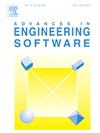Research on dynamic path planning and synergistic following algorithms for a snake-arm system with flipping and feed motion
IF 5.7
2区 工程技术
Q2 COMPUTER SCIENCE, INTERDISCIPLINARY APPLICATIONS
引用次数: 0
Abstract
There exists a snake-arm system that can operate in special confined spaces with narrow holes. The system consists of a flipping base and a snake-arm manipulator. It offers high flexibility but also presents great difficulties in solving inverse kinematics. In this paper, we propose a synergistic motion scheme for the snake-arm system to pass through small holes into confined spaces. Firstly, we present the kinematic model. Next, to guide the snake-arm manipulator smoothly into indoor spaces, we propose a dynamic path planning method. We divide the following path into three parts: obstacle avoidance path, feeding path, and transition path. Each part is planned individually, and a procedural method is used to combine them. Unlike traditional static paths, the feeding path and transition path can adaptively adjust as the snake-arm system moves. To ensure strict adherence to the dynamic path during follow-up motion, we propose a dynamic path synergistic following algorithm specifically designed for this type of system. Compared with existing algorithms that follow static paths, the new algorithm will not be constrained by the single feed direction of the snake-arm system. Simulation tests verify the effectiveness of the algorithm, which achieves an endpoint positioning accuracy of 10⁻⁷ mm for the snake-arm manipulator. Additionally, it expands the workspace of the snake-arm system from 1.59 m³ (horizontal mode) to 7.19 m³, while reducing outdoor height occupation by 21.54 % compared to vertical motion. Finally, in comparative tests, the proposed algorithm excelled in computational efficiency, accuracy, and stability.
具有翻转和进给运动的蛇臂系统动态路径规划与协同跟随算法研究
存在一种蛇臂系统,可以在具有窄孔的特殊密闭空间中工作。该系统由翻转基座和蛇臂操纵器组成。它具有很高的灵活性,但在求解逆运动学时也存在很大的困难。在本文中,我们提出了一种蛇形臂系统通过小孔进入受限空间的协同运动方案。首先,我们建立了运动学模型。其次,为了引导蛇臂机械手顺利进入室内空间,我们提出了一种动态路径规划方法。我们将以下路径分为三部分:避障路径、馈送路径和过渡路径。每个部分都是单独规划的,并使用程序方法将它们组合起来。与传统的静态路径不同,蛇臂系统的进料路径和过渡路径可以随着蛇臂系统的运动自适应调整。为了保证在后续运动中严格遵循动态路径,我们提出了一种专门针对这类系统的动态路径协同跟随算法。与现有的静态路径算法相比,该算法不受蛇臂系统单一进给方向的约束。仿真测试验证了该算法的有效性,为蛇臂机械手实现了10⁻⁷mm的端点定位精度。此外,它将蛇臂系统的工作空间从1.59 m³(水平模式)扩展到7.19 m³,同时与垂直运动相比,减少了21.54%的室外高度占用。最后,在对比测试中,所提出的算法在计算效率、准确性和稳定性方面都表现优异。
本文章由计算机程序翻译,如有差异,请以英文原文为准。
求助全文
约1分钟内获得全文
求助全文
来源期刊

Advances in Engineering Software
工程技术-计算机:跨学科应用
CiteScore
7.70
自引率
4.20%
发文量
169
审稿时长
37 days
期刊介绍:
The objective of this journal is to communicate recent and projected advances in computer-based engineering techniques. The fields covered include mechanical, aerospace, civil and environmental engineering, with an emphasis on research and development leading to practical problem-solving.
The scope of the journal includes:
• Innovative computational strategies and numerical algorithms for large-scale engineering problems
• Analysis and simulation techniques and systems
• Model and mesh generation
• Control of the accuracy, stability and efficiency of computational process
• Exploitation of new computing environments (eg distributed hetergeneous and collaborative computing)
• Advanced visualization techniques, virtual environments and prototyping
• Applications of AI, knowledge-based systems, computational intelligence, including fuzzy logic, neural networks and evolutionary computations
• Application of object-oriented technology to engineering problems
• Intelligent human computer interfaces
• Design automation, multidisciplinary design and optimization
• CAD, CAE and integrated process and product development systems
• Quality and reliability.
 求助内容:
求助内容: 应助结果提醒方式:
应助结果提醒方式:


